Background story The Life of the Buddha, Path to the Present
De Nieuwe Kerk and biographical exhibitions
With over 250,000 visitors per year, De Nieuwe Kerk Amsterdam is one of the Netherlands’ most popular exhibition venues. Exhibitions on themes such as art, photography, inspiring people and cultures bring inspiration, commemoration and celebration to one of Amsterdam’s most impressive historic monuments.
A few years ago, De Nieuwe Kerk expanded the scope of its programme to include biographical exhibitions on inspiring historical figures. The 2017-2018 We Have a Dream must-see exhibition included the exemplary lives of Gandhi, King and Mandela celebrated in words and images. In Buddha’s Life, Path to the Present, art and the life of an inspiring person converge at De Nieuwe Kerk.
Exhibition: ancient and modern art
Buddha’s Life, Path to the Present includes more than sixty exceptional works of art: from the ancient to the modern. The exhibition brings together over fifty exceptional antique artworks from the Royal Society of Friends of Asian Art (KVVAK), celebrating its centennial anniversary. Among the loans are important exhibits from private collections as well as the Rijksmuseum. These works show the wealth and diversity of the many cultures that have ties with Buddhism.

The curators of the exhibition, among whom co-curator and designer Siebe Tettero, decided to connect the life and the teachings of the Buddha to contemporary art. The essence of Buddhism is enlightenment, a state that can be achieved by embracing the here and now. This awareness is illustrated through fourteen works of art by contemporary artists, including Salvador Breed, Kohei Nawa, Rei Nato, Yoko Ono, Carolee Schneemann en Ai Weiwei. One of Ai Weiwei’s iconic trees will rise up high in the middle of De Nieuwe Kerk.
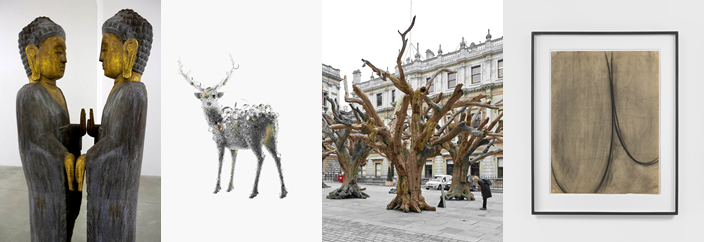
Yet this exhibition is not about the spread of Buddhism, or about the ways in which Buddhism evolved after the death of the Buddha. Instead, this exhibition aims to portray the life of the Buddha as clearly and factually as possible, as it was before the widely varying views and explanations that were born in the roughly 2500 years that followed. One important recurring symbol in his life story, from birth to death, is the tree. Trees play an important role in each of the five stages of the Buddha’s life.
Five life stages
The exhibition guides visitors through the life of Siddhārtha Gautama, also known as the Buddha. His life story is divided into five stages: birth, insight, enlightenment, the first discourse and finally death. Each stage includes crucial moments and meetings to illustrate the turning points in the man’s life. These stages are also related to the key principles of his teachings. This life story is the source of Buddhism and therefore fits in perfectly with our requirements for a biographical exhibition. The exhibits associated with each of the Buddha’s stages in life are located close to separate chapels of De Nieuwe Kerk. His life story is told through a collection of rare antique art, suitably connected with contemporary art, film footage and photos. Each stage is introduced by a unique and iconic work of art.
The five life stages are relevant because much of Buddhism is based on his life and teachings. Buddhism is not based on divine revelation, but on the teachings of a man. The word Buddha literally means ‘the awakened one’, which refers to the profound insights he gained through meditation after a lengthy spiritual quest for enlightenment.
1. Birth
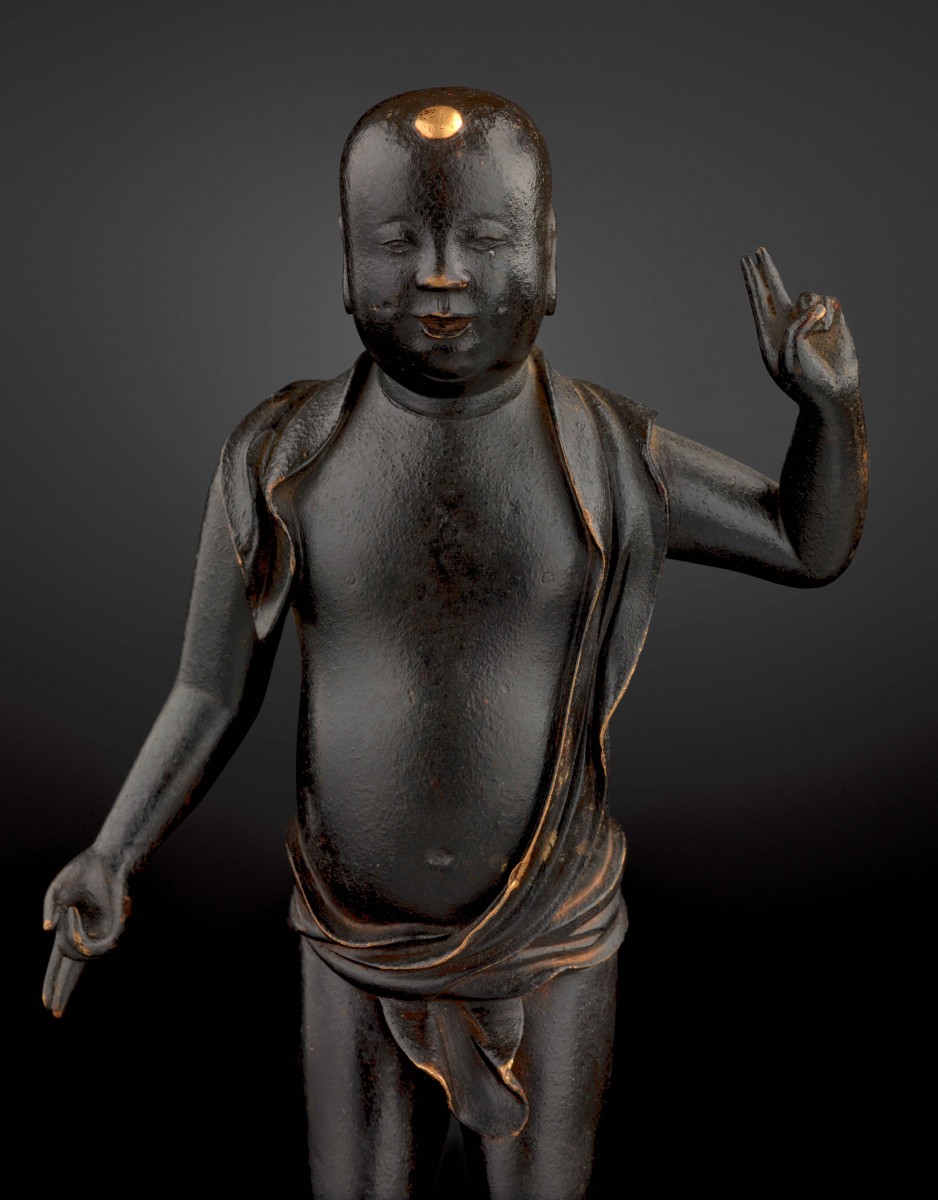
Siddhārtha Gautama’s exact date of birth is unknown. It is assumed that he lived between 490 and 410 BC. He came into this world in the republic of the Śākyas in northern India. As the son of the elected ruler, Suddhodana, he was known as Prince Siddhārtha.When the time came for her to give birth, his mother Queen Māyā left the palace in the city of Kapilavastu with a small retinue and travelled to her parents’ home. At the time, it was customary in India for women to give birth in the midst of their female relatives. On the way, however, Māyā went into labour and she gave birth to a son in the forest of Lumbinī, while standing up and holding on to the branch of a tree. A few days after returning to her husband’s court, she died. Her sister took on the responsibility of raising the child.Sages at the royal court pronounced that the baby prince’s physical attributes suggested he had a great future ahead of him. He would become either a universal ruler or an ‘awakened one’ (a buddha). Śuddhodana wanted his son to become a great king, so he brought him up in opulent surroundings amid all the pleasures of the senses. He hoped to ensure his son’s lasting attachment to the physical world and to prevent him from pursuing a spiritual path.
2. Insight
Siddhārtha grew up in the lap of luxury. His father had three different palaces built for him: one for summer, one for winter and one for the rainy season. Inside the palace walls, there were beautiful lotus ponds. He wore the most costly robes, ate the most delicious food, and enjoyed music and all sorts of entertainment. At the age of 16 he married his cousin, Princess Yaśodharā, with whom he enjoyed many years of wedded bliss.By the age of 29, he began to wonder about life outside the palace walls. He went on chariot rides to gardens outside the city. On the way there one day, he noticed a weak old man, hunched over on the side of the road. Next, he encountered a seriously ill person, writhing in pain, followed by a corpse being taken away for cremation. He was profoundly shocked by the sight of such suffering, especially when his charioteer Chandaka impressed upon him that it was an integral part of the human condition.Later the prince came across an ascetic. He was struck by the man’s aura of calm and serenity. The sight convinced him that there must be a way for mankind to free itself from suffering. Soon after, he decided to give up his princely life and set off in search of this path.Shortly after making this decision, he was told his wife had given birth to a son. He was eager to see the child at least once before leaving the palace for good. When he entered Yaśodharā’s room, he found his wife asleep with her arms covering the baby. He was afraid to wake her, in case he could not bring himself to leave as he had planned. So he ordered his charioteer to saddle up his favourite horse. They rode to the Anomā river and crossed over. Siddhārtha shaved off his hair and beard and gave his royal robes and jewels to his charioteer. He put on the saffron robe of an ascetic and wandered off into the wilderness.
3. Enlightenment
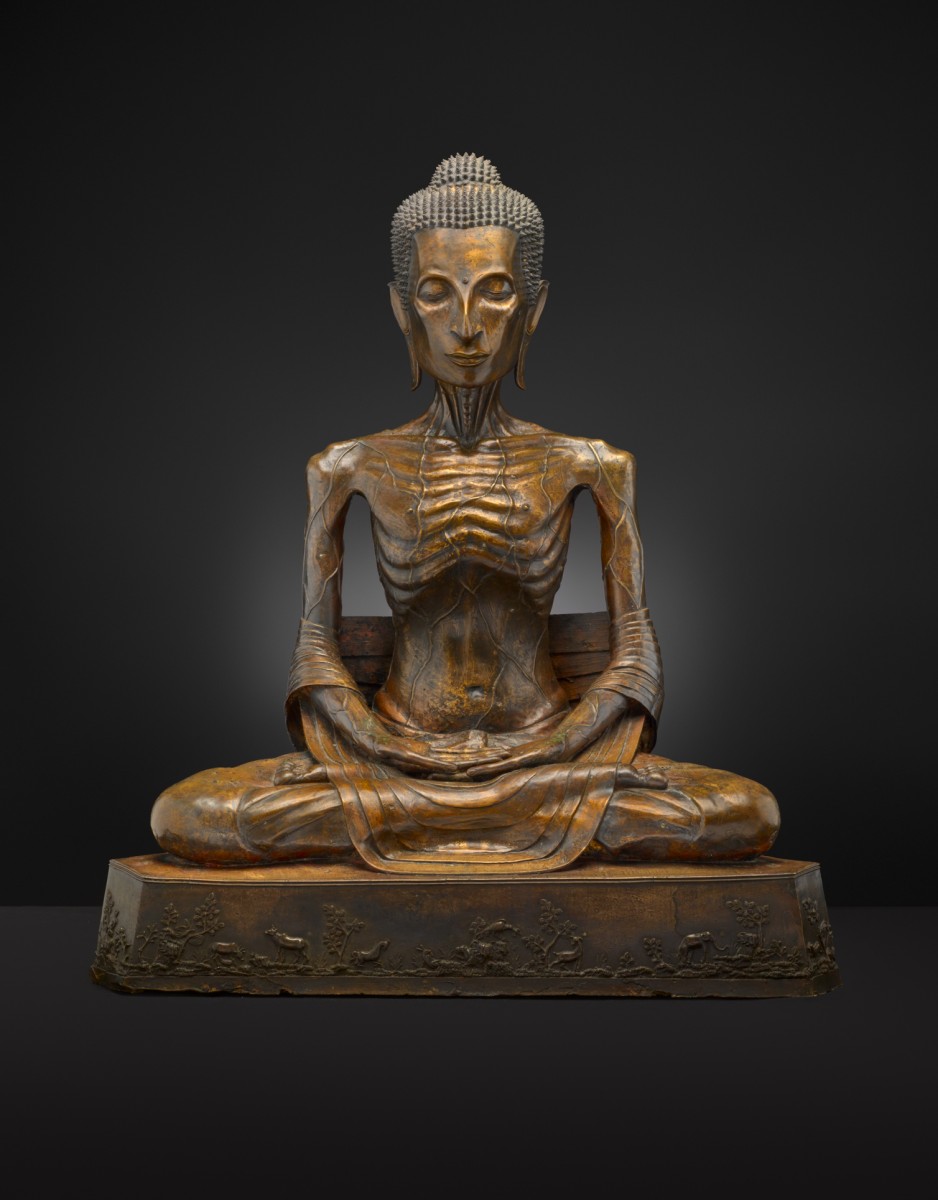
Siddhārtha visited a number of renowned sages. They taught him several meditation techniques and passed on all their insights. Siddhārtha absorbed it all, but did not find what he was looking for. He continued on his journey and met five other homeless wanderers. Together, the group pursued a strict ascetic lifestyle. He barely ate or drank at all, and practised extreme forms of self-mortification. After six years, he was nothing but skin and bone. Eventually he collapsed. Regaining consciousness, he realised that extreme ascetic practices were not the right path either. A girl herding cattle passed by and offered him some rice porridge, which he accepted. Disgusted, the other five ascetics went on their way without him.Siddhārtha travelled to the woodland grove at Uruvelā, where he sat down under a large fig tree (the bodhi tree; Ficus religiosa) and turned his gaze to the east. He vowed to remain seated there and meditate until he had found a path to liberation.At this point he was put to the test by the demon Māra, Lord of worldly desires. Māra summoned up an army of terrifying demons but Siddhārtha refused to be distracted by them. Then Māra brought his voluptuous daughters to seduce him. Again, Siddhārtha remained perfectly calm. Finally, Māra indignantly asked what right Siddhārtha had to clear a path for mankind to escape Māra’s power. In response, Siddhārtha stretched out his right hand to touch the earth and call on it to bear witness to the long path he had travelled. The earth assented with a tremor and Māra departed. Siddhārtha sank into profound concentration. At dawn, when the morning star shone in the sky, he achieved the enlightenment that he had sought for so long. He perceived the transience of all physical and mental phenomena and saw that nothing in this world can exist in a vacuum, in isolation from everything else. This brought the further realization that there was nothing to which he could cling forever and that human beings had no immutable, personal essence, no permanent ‘self’. As a result, all selfish desires were extinguished in him and he was filled with loving kindness and compassion towards all living beings. He achieved Nirvāṇa and became the Buddha.
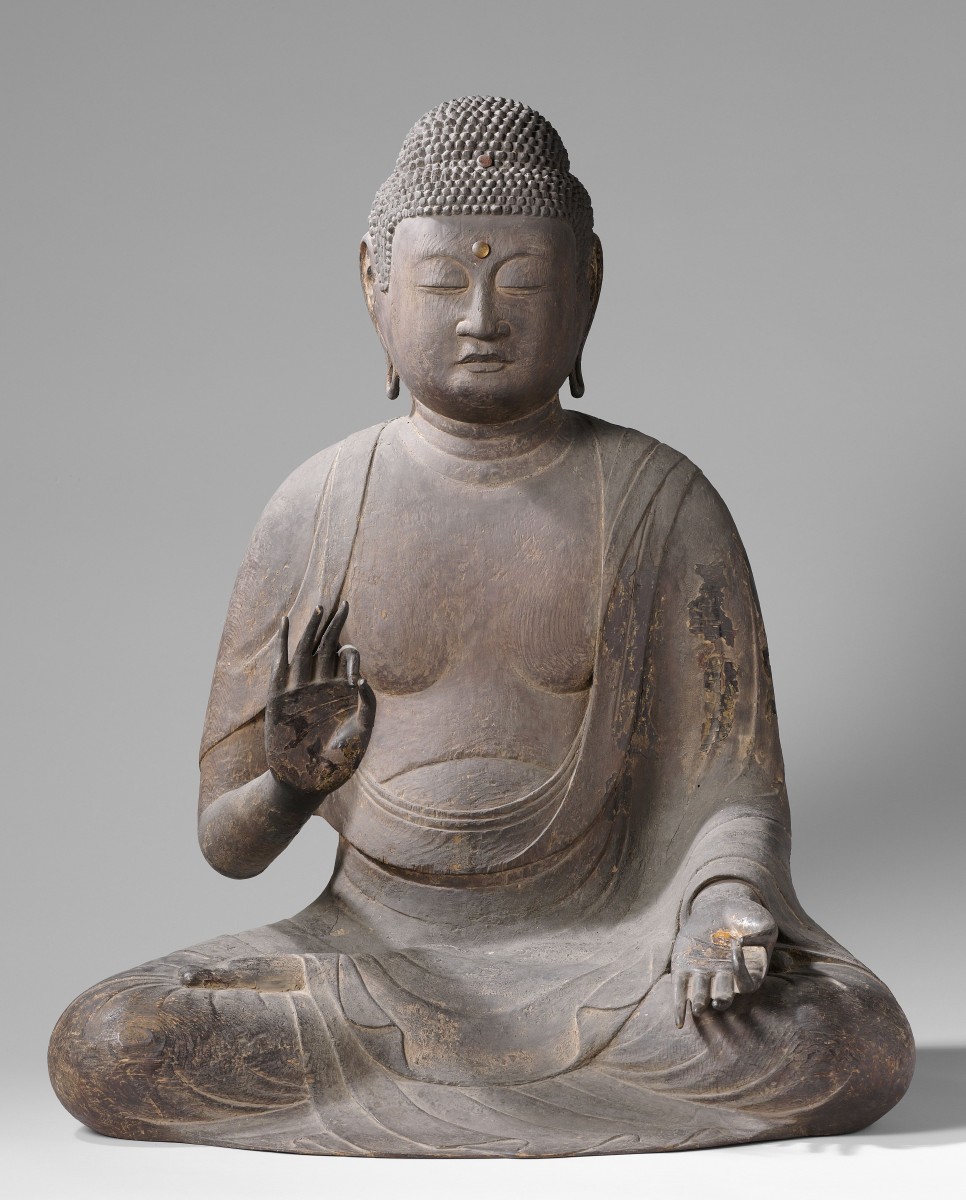
4. First discourse
After achieving enlightenment, the Buddha remained in the woods at Uruvelā for seven weeks, contemplating his new insights. Then he travelled to the city of Benares (Varanasi), a major religious centre in India. Outside the city, in a deer park (now Sārnāth), he met the five ascetics who had abandoned him. It was to them that he delivered his first sermon. Afterwards, one of the five immediately achieved enlightenment. He asked the Buddha to accept him as his disciple and the Buddha replied ‘Ehi bhikṣu’ (Come, monk). Over the next few days, the Buddha continued teaching the ascetics. The other four also achieved enlightenment and subsequently remained with him as his disciples. They became the first members of his community of monks, known as the ‘Saṃgha’.After some time, he travelled to Kapilavastu to share his insights with his family. His wife Yaśodharā had kept track of his quest and had herself attempted to pursue the path of meditation. His son entered the monastic order as a novice. At the request of the aunt who had brought him up, the Buddha also established an order of nuns. Later, when King Suddhodana died, Yaśodharā and the Buddha’s aunt Prajāpatī both became nuns. After this visit, the Buddha spent forty-five years travelling around the Ganges basin and instructing all who requested it. He taught all social classes, from the courts to farmer’s villages, and both sexes, without distinction.
5. Death
At the age of eighty, the Buddha told his disciples that he would not be with them much longer. Soon afterwards he fell seriously ill, but recovered sufficiently to be able to travel with a group of students to Vaisali, a city dear to his heart. When they were leaving again, the Buddha turned back and gazed at the city for a long time, saying, “Now I shall never see Vaisali again”. Not long after this, he suffered serious food poisoning. Even so, he continued with his students to the town of Kuśinārā. There he asked them to prepare a couch for him between two Sal trees (Shorea robusta). He lay down on the couch and announced that he was about to die. He told his disciples to summon the rulers of the Malla tribe, because he did not wish to die on their land without them witnessing this.
Surrounded by his disciples and the Mallas, he asked three times if they had any remaining questions or doubts about his teachings. All remained silent. Then he uttered his last words: “Nothing lasts forever. Work hard to gain your own liberation”. Then he entered into a meditative state and died. The trees shed their blossoms and the birds stopped singing.
The body of the Buddha was cremated and his ashes were given to the rulers of eight kingdoms in northern India, and stupas were built to house the ashes.
###
Contemporary Art
Ai Weiwei and Kohei Nawa
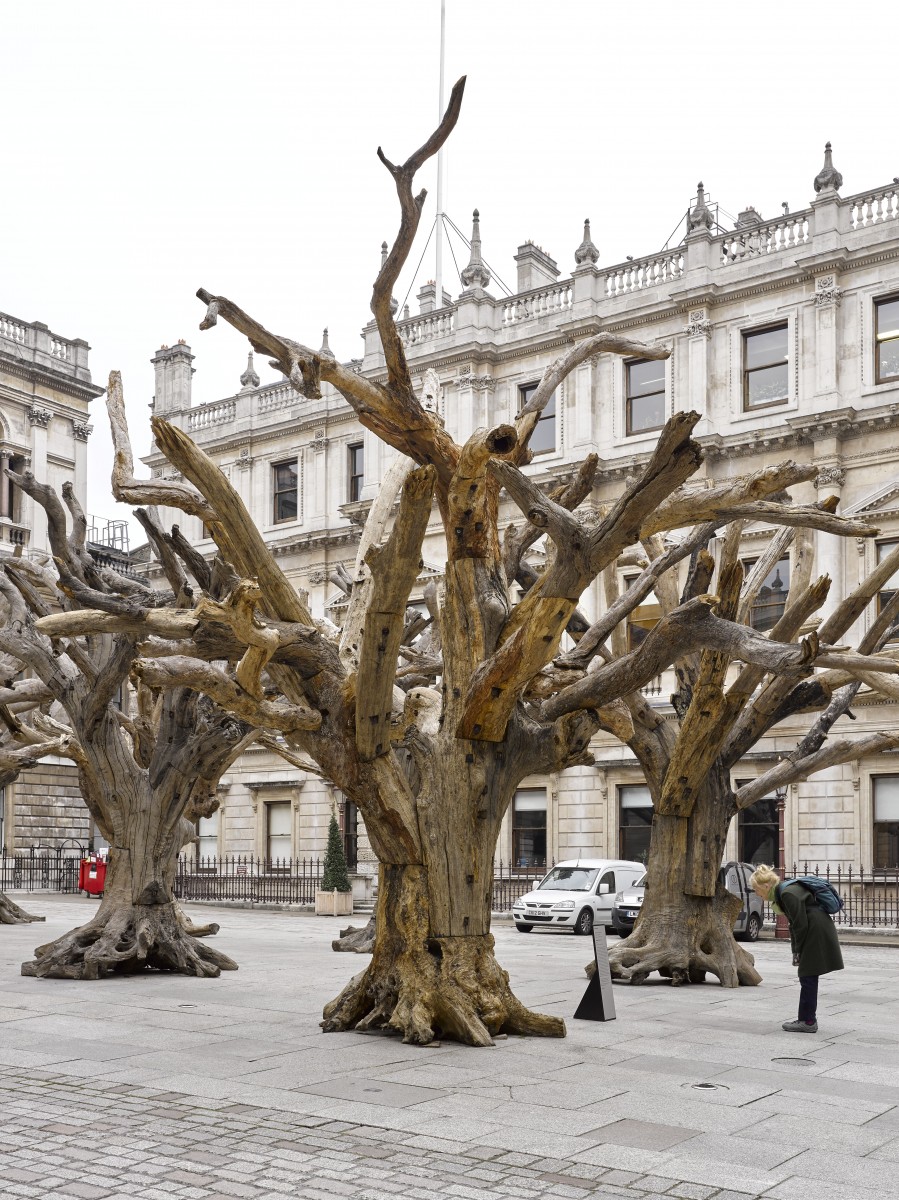
The first eye-catcher in the exhibition is a big Buddha statue. After that, the visitor is attracted to works by Chinese artist Ai Weiwei and Kohei Nawa from Japan. Tree (2010), a piece by Ai Weiwei, and Kohei Nawa’s PixCell-Deer#51 (2018) appear visually and conceptually connected to the Buddha’s life story.
Ai Weiwei’s tree is made of old trees that were cut down in China, a country that is currently in the process of strong urbanisation. In this way he tries to preserve history. In the exhibition, the tree refers to the tree in Bodh Gaya under which Siddhārtha Gautama found enlightenment.
PixCell-Deer#51 is an art work with an actual stuffed deer, that the artist bought at an auction. This piece symbolises the transience of life and of beauty in particular, and our inability to handle this fact of life. It is also reminiscent of an ancient Indian story, passed down through the ages; the Rāmayāna, estimated to be four thousand years old. Rāmayāna tells the tale of an evil spirit, Marisha, who seduces Sitā, wife of prince Rāma, the story’s hero. Marisha takes the form of a beautiful golden deer with a silver aura. Overcome by greed, Sitā demands that Rāma catch the deer for her. Rāma, who is also unable to fight temptation, goes out to hunt. Marisha’s friend Ravana seizes the opportunity to kidnap Sitā, an event that ushered in a long period of suffering, not only for Rāma and Sitā themselves, but also for everyone they hold dear and for those intent on doing them harm. At the moment of his enlightenment, the Buddha found a way to leave suffering behind.
Yoko Ono
Three Mounts (1999/2008–2018), by Japanese-American artist Yoko Ono consists of three mounds of earth, each from a different place on this planet where violence and abuse against women has occurred. It is Ono’s wish that from these mounds new life will emerge during the exhibitions as a sign of hope. It is a reference to the first stage in the life of the Buddha, the birth.
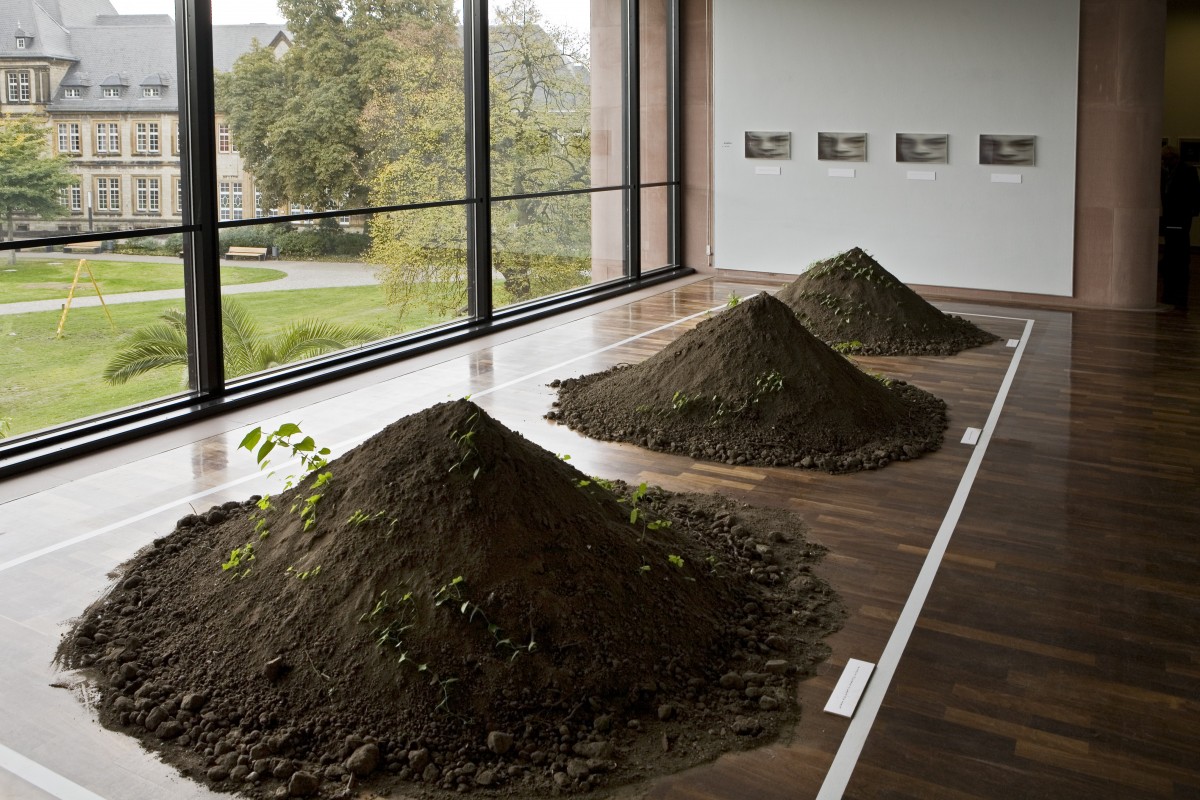
Three Mounds, 1999/2008–2018
Earth; dimensions variable
Exhibition: Between the Sky and My Head, Kunsthalle Bielefeld, 24 Aug. – 16 Nov. 2008
Foto │ Photo by Philipp Ottendoerfer © Yoko Ono
Carolee Schneemann
The installation of the American artist Carolee Schneemann is a direct reference to the second stage in the life of the Buddha, renunciation. More Wrong Things (2000) is based on works by Schneemann from the sixties, which represented a protest against some of the acts carried out by the US Army during the Vietnam War (1955–75). This piece adds the atrocities that were committed during many conflicts worldwide of the early 21st century. Schneemann connects universal, collective suffering to smaller, personal suffering that human beings experience every day. In Buddhism, learning to face suffering and physical pain and using it for personal growth and experience free from rejection and judgement is an important exercise.
Salvador Breed
Dutchman Salvador Breed works with sound. He studies how hearing sound and not hearing sound can be manipulated in time and space. He created a new installation for this exhibition.
Background and collections
The 100th anniversary of the Royal Asian Art Society in the Netherlands (KVVAK) was the main reason for this exhibition. De Nieuwe Kerk Amsterdam works closely with the Society and celebrates this landmark anniversary by displaying a rich selection of the Society’s collection. Buddha’s Life, Path to the Present is an important part of the anniversary celebrations.
The exhibition will be further prepared in close collaboration with the Rijksmuseum – in which a varying exposition shows different KVVAK collections –, the National Museum of World Cultures, the Victoria and Albert Museum in London, Museum Voorlinden and various private collectors (KVVAK members), for instance: Ger Eenens Collection (The Netherlands), Collection Ben Janssens (London), Annick and Marcel Nies Collection (Antwerp, Belgium). The Society and the curators of these museums also have an advisory role. In addition, Professor Matthijs Schouten, representative of all living Buddhist traditions in the Netherlands was recruited as an advisor.
Programme
The activities scheduled to take place in De Nieuwe Kerk are an important part of the exhibition. The opening of the exhibition will be marked by a dialogue between His Holiness the Dalai Lama and young people and scientists, entitled ‘Compassion and Technology’. Public participation and meditation play an important role in the exhibition itself and for this purpose a permanent meditation spot will be set up. The programme also includes a variety of workshops on music, sound and silence, concerts, films and a debate evening.
Previous exhibitions about religions
De Nieuwe Kerk has a tradition of exhibitions dedicated to world religions. In 2010–11, the Passion for Perfection exhibition shone the spotlight on Islamic art treasures, in 2012–13 three thousand years of Jewish religion, art and culture were celebrated in Judaism, a World of Stories, and in 2015–16 it was Christianity’s turn in Rome: Emperor Constantine’s Dream.